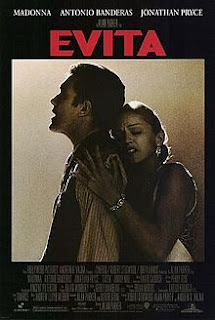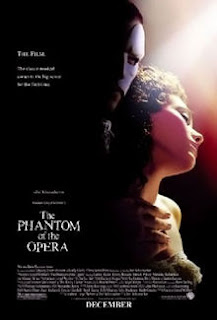Downton Abbey Extra: One of These Things Is Not Like the Other
Okay, so the song doesn't quite apply, since I'm mainly looking at two things. Oh well. It's catchy.
So where does a twerp like me get off thinking that she can criticize the historical accuracy of the great Downton Abbey? I'll confess that I'm not the most qualified person. While one of my degrees is in history, I specialized in a different time period. I have been an amateur historian of the Victorian period (1837-1901) for well over a decade, and recently spent a year doing some intensive research into Victorian reforms and social customs. But Downton Abbey isn't set during the Victorian period -- it's not even set during the Edwardian period (1901-1910). From Series One to the present, it has been set during the reign of George V (1910-1936).
However, despite the occasional reminders that "the world is changing!", Downton Abbey seems to be stuck in a time warp. It's still 1912 on the estate, which might as well be 1892. In fact, in some respects, it could easily be 1812. So while I know next to nothing about 1920, the year in which Series Three is set, I know a lot about the Regency, Victorian, and Edwardian periods -- enough to know that a lot of people get them confused.
And yes, when your life consists of country estates and entail, it's easy to think that nothing ever changes. But these eras of history are different in many significant ways, which will be detailed below. Since I am the least familiar with the Edwardian period (despite knowing a lot about Edward VII himself), I will talk about it the least. Supposedly, the most obvious "change" from the Victorian period was that social mores relaxed a little. Edward's moralizing, perpetually mourning mother was gone, and Edward, with his spotty record of fidelity, was in her place. (I actually think Victoria is quite awesome and would love to devote a whole post to her sometime.)
So what were some of the other differences between the areas?
1. Industrialization
Industrialization in Britain was heating up from the late eighteenth century through the Regency period (1811-1820), when Jane Austen's novels were set. You would read about the occasional character (like Bingley in Pride and Prejudice) whose wealth came from industry, and who then bought country estates and tried to wipe away the stain of their origins. However, you never see the factories and businesses; they are more rumor than fact. By the Victorian period -- specifically, the mid-nineteenth century -- factory towns and major factory cities were much more prominent. Northern "towns" like Manchester were exploding in size, going from 75,000 in 1801 to 300,000 by 1851. Elizabeth Gaskell's North and South does a great job portraying what these industrial cities were like.
Even if you could live out in the country and avoid these cities, you couldn't escape other aspects of industry, such as the railway. The railway was virtually unheard of in the Regency period, but by the 1840s, it was criss-crossing the entire country, cutting down on travel time and making it easier for all classes to move around. You remember that famous Violet line: "What's a week-end?" Supposedly what we know as the weekend came about due to a combination of better workplace regulations (including set hours) and greater ease of transportation. During the last quarter of the century, more people had time to just get away from it all on Saturday and Sunday. Lower class people were showing up in greater numbers in holiday spots that used to be mainly the preserve of the upper classes, causing many of the upper classes to flee to Europe in horror. This may have even included the (then) Sixth Earl of Grantham and his family.
Britain's industrialization peaked in the mid-19th Century. It would continue to be dominating into the 20th Century, but no longer quite so much. Germany and the United States began to catch up in the 1870s.
2. The Enemies
During the Austen Regency period, the big outside enemy was France. Given that most novels were set during the Napoleonic Wars (1803-1815) or shortly thereafter, it's not hard to see why. Throughout much of the Victorian period, France remained the Big Enemy. After Napoleon III's coup in 1851, which turned the French republic into a dictatorship, many English people feared that Napoleon III would finish what his uncle started and launch an invasion across the English Channel. It was only after Napoleon III's forces got routed by the Prussian-led German forces in the Franco-Prussian War (1870) that the English saw the emperor, ahem, had no clothes.
During the Victorian period, Russia was disliked as well, thanks to the Crimean War (1853-1856), which pitted Russia against Britain (and France) over who should control a piece of the crumbling Ottoman Empire. After the war, Russia was frequently mistrusted, seen as autocratic and barbarian, big and strong, and too Slavic. Yet interestingly, I don't know if English/British people viewed Germany as a genuine threat before the 20th Century. They had that general wariness of Germans as foreigners, aka Not Like Us, which they displayed toward Prince Albert from the moment he arrived. Yet at the same time, Victoria and Albert sent two of their daughters to live in Germany, and two of their other daughters stayed in Britain to marry German princes, and two of their sons married German princesses. Germans might have been foreigners, but they weren't enemies, per se -- hell, most of the extended Royal Family had been German for over a century. English people might not have viewed Germany as a true threat until after 1870, when the German provinces unified under a Prussian king -- now emperor -- Wilhelm I. Prussia was strong and militaristic, features that it displayed just as prominently in the 20th Century as in the 19th. Shortly before World War I, France and Russia were allies intended to contain Germany, while Germany, Austria, Italy, and the remains of the Ottoman Empire were enemies.
3. Women
In 1812 as much as in 1912, male-line entail was a bitch. It destroyed the hopes and security of half of Jane Austen's heroines, it seemed, as much as it threatened to force the female Crawleys out of house and home upon Lord Grantham's death. Women during the Regency period could not inherit any entailed property, and once they married, their property instantly became their husband's. Sometimes their fathers could work out a pre-nuptial agreement, but that usually wasn't the case. Things did not improve much during the Victorian period, but they did improve. In 1857, violence was recognized as grounds for divorce. In 1870, Parliament passed an Act that allowed married women to keep the wages she earned for her work. In 1882, another significant Act was passed that recognized women as having separate legal rights apart from their husbands. The Act allowed married women to keep or sell separate property that they inherited during marriage, to sue and be sued, and to be responsible for their own debts.
As for education, during the Regency period, the best an intelligent middle or upper-class girl could hope for was a very intelligent governess, or maybe a father who was willing to tutor them, or a private school with an intelligent teacher. Otherwise, "education" might consist of a finishing school, where very little of real use was taught. Which was okay, because women weren't expected to use their minds anyway. As for a working-class girl, forget any hope of an education, unless by luck you were able to attend a charity school. Even there, the hours of instruction were few, because the girl's family expected her to be working all the time from a very young age, whether it was minding the younger children or going into service.
All of this was in existence in the Victorian Era, but in the 1850s, the tide began to shift. In 1853, Cheltenham Ladies' College was founded, which was one of the first schools to treat women like they had brains that deserved to be challenged. In 1870, the government instituted compulsory schooling for boys and girls, so girls of all classes learned to read and write, and many eventually gravitated toward city jobs, like secretary or "typewriter" or saleswoman. Women who wanted to attend a British university could earn a degree at the University of London from 1878 onward. They were admitted to Cambridge in 1869 and Oxford in 1878, but were not considered full members of the university and could not earn degrees until the 20th Century. Not until 1892 were women admitted at the Scottish universities.
4. Men's Facial Hair
During Austen's era, they might have sideburns, but were otherwise clean shaven. It was enough that they were willing to display the hair on their heads -- wigs had finally gone out of fashion after a mere century or so. By the 1840s, sideburns were still the primary facial hair, though some men wore moustaches. By the 1850s and 1860s, the sideburns were growing longer and longer. Sometime in the 1860s, beards started to appear. However, it was around the 1870s when facial hair really started to get crazy. Moustaches became more prominent, and it was not uncommon to see men with a sort of half beard known as a "lip curtain," where the moustache connected with the sideburns, but the chin remained clean shaven. It was also in the 1870s that a particularly ugly beard was in fashion, sported by none other than the future Edward VII. Instead of being close-cropped, like his later beard, this one looked like a giant shrub was growing out of his face. I wish I could link to a photo, but I can't seem to find one. Around the 1880s, some men started growing their moustaches really long and curling the ends. In the 1890s and 1900s, close-cropped beards (like George V's or the later Edward VII's) were also in fashion. While there might be the rare man who was completely clean shaven, it was "the style" for men to have facial hair of some kind. Yet I think it was among those born in the 1880s and later that facial hair finally started to go out of fashion.
That was pretty superfluous, but given my first Downton Abbey post, I felt I had to throw that in there.
5. Empire
Britain, of course, had an empire during the Regency period that included British North America (Canada), small parts of South America, the Caribbean, India ruled by the British East India Company, and the beginnings of Australia settlement. By Austen's time, Britain lost the Thirteen Colonies that would form the United States, but managed to rebound after defeating Napoleon. During the Victorian period, the British began to rule India outright and started to turn more attention toward Africa. By the Edwardian period, the sun truly never set on the British Empire, though that wouldn't last long.
So those are some of the main differences between the eras. There are, of course, many more that I didn't mention at all, not the least of which were technological advances and health reforms. Still, it's clear that the Regency, Victorian, and Edwardian periods were not all the same -- just different points on a continuum. Even by 1912, the start of Downton Abbey, many things were much different than they were even 20 years ago. Even if it doesn't feel that way.



Comments
Post a Comment